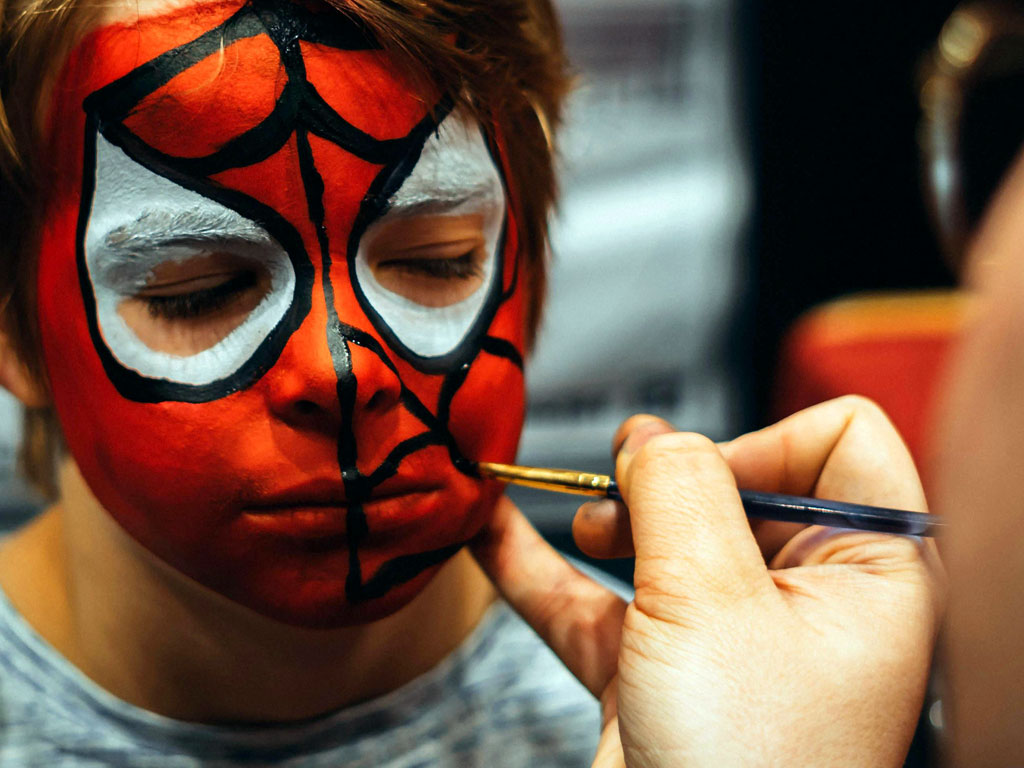Children of all ages love to be face painted and see when they transform into a ghost, monster, cat, witch, tiger, fantasy figure or to something else. It will add fun to the birthday party. On this page we give advice for face painting.
Guide to face painting
There are a lot of different face painting kits to be bought in hobby shops and toy shops. You can find both water based colours that you paint with a brush or a sponge and face crayons. For the most advanced paintings you should choose water based colours. You may also use ordinary make up like lipstick, eye shadow and so on. To give the painting an extra glamorous touch use glittering spray or glittering cream. Make sure you have a lot of paper napkins to wipe of stains.
Be aware that many children have allergies or skin problems. Therefore first make a skin test on your model by applying a little colour on the inside of his or her arm and wait a couple of minutes. If you are having face painting on a children’s birthday party inform the parents and ask for possible allergies or skin problems. Don’t paint children with cuts in their faces.
Be prepared by deciding what motive your face painting should have and bring out the paint and accessories before you start painting. Children often don’t have much patience to sit still. Give the child a mirror and talk to the child while you paint so they can be apart of the transformation.
Hold your left hand (if you are right-handed) on the models head to keep it still while you paint. Start with the foundation which should cover the whole face, apply it with a soft sponge. You might have to paint the foundation twice in order for it to cover properly. Let it dry in between. Use different sponges to the different colours. If it’s a birthday party and many shall be painted, first paint the foundation on child number one and let it dry while you paint model number two and so on.
Let the foundation dry completely before you go on with the detailed painting. Begin with the dark colours and finish with the dark ones.
For smaller paintings like for example a butterfly or a death’s head on the cheek, you could use stencils. If you don’t have much time you can use non-permanent tattoos or glittering which will give a nice effect.
Always have a mirror within reach so the subject can easily observe the ongoing progress without any hassle.

